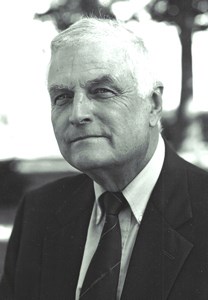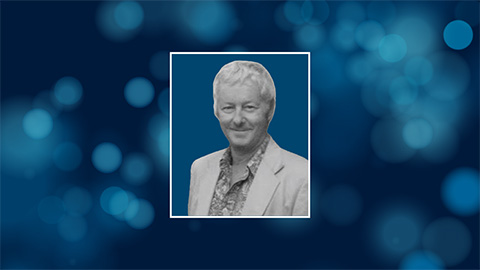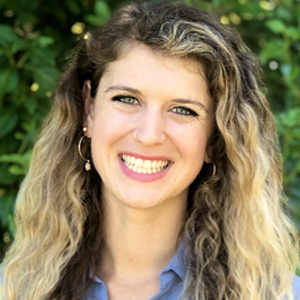In memoriam: Thomas Edward Thompson
Thomas Edward Thompson, professor emeritus and former chair of the biochemistry department at the University of Virginia School of Medicine, died Nov. 16, 2021, at the age of 95 in Charlottesville, Virginia.

Thompson was born in Cincinnati, Ohio on March 15, 1926, to Theron and Florence Thompson. After serving in the Army, he completed his B.A. in 1949 at Kalamazoo College and earned his Ph.D. in biochemistry from Harvard University in 1955. He completed two postdoctoral fellowships abroad in Sweden and England before becoming an assistant and then associate professor of physiological chemistry at the Johns Hopkins University School of Medicine. He left Hopkins in 1966 to become a professor at the University of Virginia where he continued taught and did researching as a member of the biochemistry department until his retirement in 1997.
Thompson's research employed biophysical techniques, particularly electron paramagnetic resonance, or EPR, to study the structure and functions of biological membranes. EPR is well-suited for measuring reaction kinetics, and with a special focus on the lipid bilayer, he studied transfer kinetics of nonprotein-mediated phospholipid transfer and related cholesterol content to the permeability properties and structural parameters of biological membranes. His work resulted in over 200 scientific publications.
Thompson served as president of the Biophysical Society in 1976 and as editor of the Biophysical Journal from 1987 to 1992. He also served for many years as a scientific consultant to the National Science Foundation and the National Institutes of Health, from which he received numerous fellowships as well as a Career Development Award, and Merit Award. Other awards include the Macy Faculty Scholar Award, the K. C. Cole Award, the Alexander von Humboldt Prize, and the Avanti Award in Lipids.
Whether gardening, skiing, canoeing, camping or fishing, Thompson loved to spend time outdoors with his wife of 68 years, Maria-Michaela Smits.
Thompson is survived by his wife and three sons and their spouses, Stephen and Claire and daughter, Amelia; Christopher and Perrin and daughter, Elizabeth; and David and Maggie and children, Henry and Rowan. His oldest son, Peter, died in 1980.
Enjoy reading ASBMB Today?
Become a member to receive the print edition four times a year and the digital edition monthly.
Learn moreGet the latest from ASBMB Today
Enter your email address, and we’ll send you a weekly email with recent articles, interviews and more.
Latest in People
People highlights or most popular articles

Nuñez receives Vallee Scholar Award
He will receive $400,000 to support his research.

Mydy named Purdue assistant professor
Her lab will focus on protein structure and function, enzyme mechanisms and plant natural product biosynthesis, working to characterize and engineer plant natural products for therapeutic and agricultural applications.

In memoriam: Michael J. Chamberlin
He discovered RNA polymerase and was an ASBMB member for nearly 60 years.

Building the blueprint to block HIV
Wesley Sundquist will present his work on the HIV capsid and revolutionary drug, Lenacapavir, at the ASBMB Annual Meeting, March 7–10, in Maryland.

In memoriam: Alan G. Goodridge
He made pioneering discoveries on lipid metabolism and was an ASBMB member since 1971.

Alrubaye wins research and teaching awards
He was honored at the NACTA 2025 conference for the Educator Award and at the U of A State and National Awards reception for the Faculty Gold Medal.

